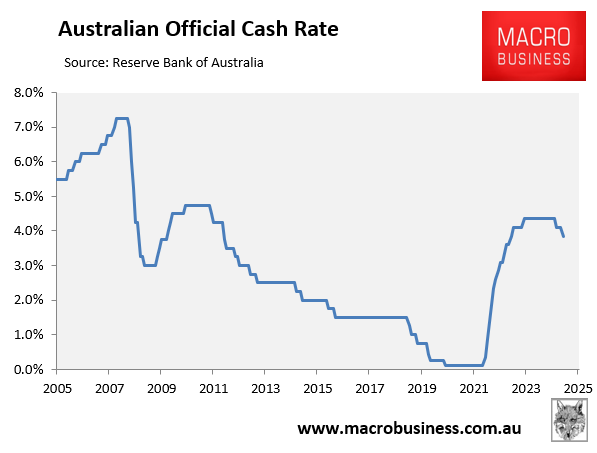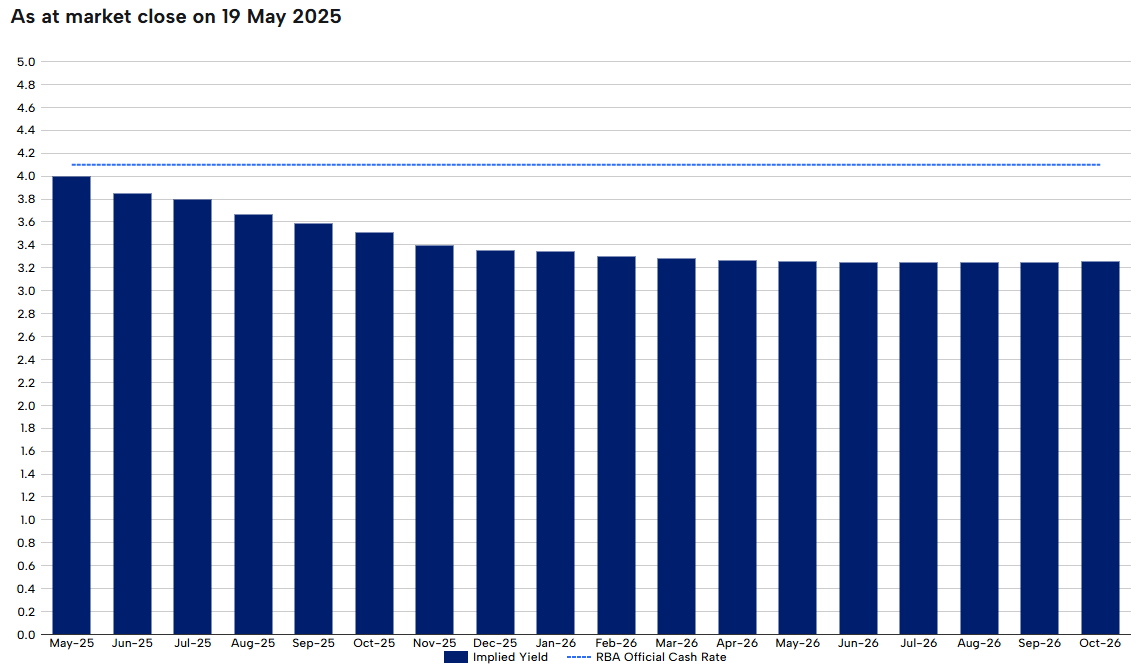As widely expected by financial markets and economists, the Reserve Bank of Australia (RBA) lowered the official cash rate (OCR) by 0.25% to 3.85%.

In coming to its decision, the statement noted that “inflation continues to moderate”, with “annual trimmed mean inflation (2.9%) was below 3% for the first time since 2021 and headline inflation at 2.4%”.
“Underlying inflation is now expected to be around the midpoint of the 2–3% range throughout much of the forecast period”, the RBA added.
However, the RBA acknowledged that the economic outlook is uncertain and provided no future guidance.
“There is still considerable uncertainty about the final scope of the tariffs and policy responses in other countries. Geopolitical uncertainties also remain pronounced”.
The RBA also noted that while domestic demand “appears to be recovering”, “businesses in some sectors continue to report that weakness in demand makes it difficult to pass on cost increases to final prices”.
The labour market also remains tight, although wage growth has softened despite poor productivity growth.
The following paragraphs highlight the domestic uncertainty facing the RBA:
While the central projection is for growth in household consumption to continue to increase as real incomes rise, recent data suggest that the pick-up will be a little slower than was expected three months ago. There is a risk that any pick-up in consumption is even slower than this, resulting in continued subdued growth in aggregate demand and a sharper deterioration in the labour market than currently expected. Alternatively, labour market outcomes may prove stronger than expected, given the signal from a range of leading indicators.
More broadly, there are uncertainties regarding the lags in the effect of monetary policy and how firms’ pricing decisions and wages will respond to the demand environment and weak productivity outcomes while conditions in the labour market remain tight.
The RBA concludes that the “risks to inflation have become more balanced”. However, it “remains cautious about the outlook, particularly given the heightened level of uncertainty about both aggregate demand and supply”.
As a result, the RBA said that it “be attentive to the data and the evolving assessment of risks to guide its decisions”.
In other words, the RBA will rely on the flow of domestic data and external developments in guiding future rate decisions.
For what it is worth, financial markets were predicting two more rate cuts this year and an end-of-year OCR of 3.35%.


